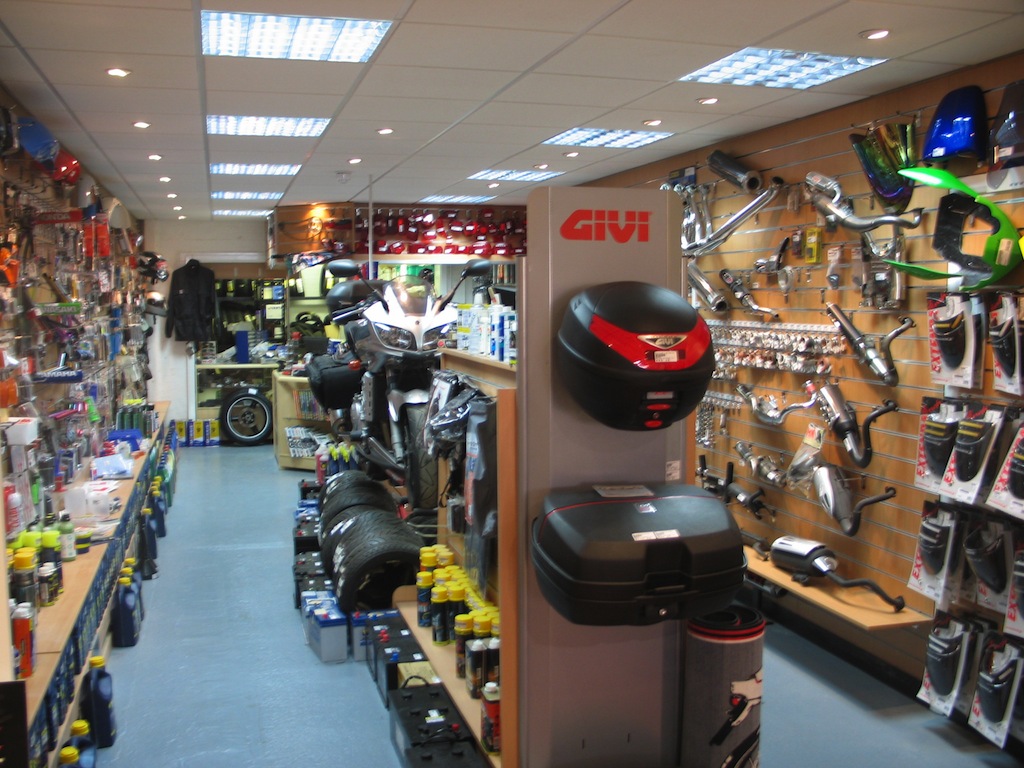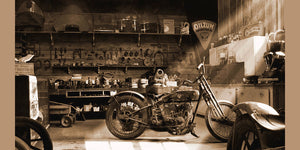Comprehending the Important Parts of a Bike: A Comprehensive Guide for Fanatics
For motorcycle lovers wanting to raise their riding experience and ensure their bikes run efficiently, comprehending the important components of a motorbike is vital. Each component, from the engine's detailed functions to the crucial role of the stopping devices, not just influences efficiency however also safety and security and comfort. This guide will certainly go through the fundamental parts that every motorcyclist should know with, making it possible for educated choices in both upkeep and possible upgrades. As we begin this expedition, one must ask: how does each element interact to develop the seamless experience every fanatic seeks?
Engine Elements

The camshaft plays a crucial role in managing the timing of the engine's valves, making certain the accurate opening and closing necessary for efficient fuel and air intake, as well as exhaust expulsion. This timing is important to maintaining optimum engine efficiency and efficiency. Additionally, the carburetor or fuel shot system, depending on the motorbike design, is liable for blending air with gas in the right ratio for burning.
The cooling system, either air or liquid-based, functions to keep the engine's temperature within functional limits, stopping getting too hot and making certain durability - motocross gear nz. Each element, thoroughly designed and integrated, adds to the seamless operation of the engine, defining the motorcycle's power output and general performance
Transmission System
Essential to the motorcycle's functionality, the transmission system ensures efficient power transfer from the engine to the wheels. This system consists of a number of crucial elements, consisting of the clutch, gearbox, and last drive, each playing an essential duty in equating the engine's power right into motion. The clutch, typically run by a hand lever, serves to disengage the engine and engage from the transmission, allowing for smooth gear changes and regulated velocity.
The transmission, usually described as the transmission appropriate, includes a set of gears that bikers can manually shift with to change the bike's speed and torque outcome. These equipments are prepared in a series that enables the motorcycle to speed up smoothly and keep optimal engine performance across different speeds. Many bikes utilize a consecutive transmission, needing the rider to change gears in a predetermined order.
Braking Mechanisms
While comprehending the transmission system is crucial to taking advantage of a bike's power, similarly crucial is the capacity to regulate and stop that power efficiently, which is where stopping mechanisms enter play. Brakes are critical for safety and efficiency, providing the cyclist with the needed control to browse different surfaces and problems. Typically, motorcycles feature two kinds of braking systems: disc brakes and drum brakes.
Disc brakes are extra prevalent in modern motorbikes due to their superior efficiency. They contain a brake disc, caliper, and pads. When turned on, the caliper squeezes the brake pads against the rotating disc, converting kinetic energy right into warm, consequently slowing the wheel. This system uses far better warmth dissipation, consistent performance, and enhanced stopping power, particularly in wet conditions.
Alternatively, drum brakes, though much less typical, are still found in some motorcycles. They work by pushing brake shoes informative post versus the internal surface of a drum connected to the wheel. While usually less effective in warm dissipation and stopping power, drum brakes are easier and much more economical.
Recognizing these braking systems' nuances allows riders to preserve their motorbikes correctly and appreciate the engineering that ensures effective and safe quiting.
Suspension and Steering
Suspension and steering systems are vital components that substantially affect a motorcycle's handling and adventure comfort. The shock absorber, containing forks at the front and shock absorbers at the back, absorbs road abnormalities, improving security and control. Front forks, typically telescopic or upside down, compress and rebound to alleviate effects, while back shock absorbers preserve tire call with the roadway, vital for grip and safety and security.
Guiding, centered around the handlebars, attaches the rider to the motorbike's directional control. The steering head bearings make certain smooth operation, allowing specific maneuverability. Appropriate placement and upkeep of these bearings are crucial for foreseeable steering action and minimizing motorcyclist fatigue.
The suspension's adjustability is one more essential aspect; preload, damping, and rebound settings enable customization to fit different riding conditions and styles. This adaptability is necessary for optimizing performance, whether navigating metropolitan streets or dealing with tough trails. Innovations like electronic suspension systems supply real-time adjustments, improving trip quality across varied terrains.

Electrical Solutions
After guaranteeing a controlled and smooth trip through reliable suspension and guiding systems, interest transforms to the electric systems, a crucial facet of modern motorcycles. These systems play a critical go right here duty not only in beginning the engine yet likewise in powering numerous parts that improve the functionality and security of the motorcycle.
At the heart of a bike's electrical system is the battery, which shops electrical energy essential for starting the engine and powering auxiliary systems - motorbike shop. The generator or generator, combined with the rectifier-regulator, makes certain the battery remains charged while the motorcycle is in procedure, transforming power right into electric energy and keeping voltage degrees
The ignition system, an additional essential part, is liable for igniting the air-fuel mix in the engine's cylinders. Modern motorbikes typically utilize an electronic ignition system, supplying higher performance and dependability compared to standard systems.
Lights systems, consisting of headlights, tail lights, and signs, are also important, making sure exposure and security for the biker. Additional digital parts such as sensing units, control systems, and shows add to advanced attributes like gas shot monitoring, anti-lock stopping systems (ABDOMINAL), and digital dashboards, further boosting the riding experience.
Verdict
A thorough understanding of a motorbike's vital components, consisting of the engine, transmission system, stopping systems, suspension, steering, and electric systems, is vital for enthusiasts intending to optimize efficiency, security, and convenience. Mastery of these components enables for educated decisions regarding upkeep and upgrades, ultimately improving the riding experience. By incorporating this expertise, bikers can guarantee their bikes operate at peak effectiveness and reliability, consequently making the most of both pleasure and long life of their lorries.
For bike enthusiasts looking to raise their riding experience and guarantee their bikes run efficiently, understanding my website the crucial components of a motorcycle is vital.Indispensable to the motorcycle's performance, the transmission system makes certain reliable power transfer from the engine to the wheels.While understanding the transmission system is key to using a motorcycle's power, equally essential is the ability to manage and quit that power effectively, which is where braking mechanisms come into play. Generally, bikes feature 2 kinds of braking systems: disc brakes and drum brakes.
A complete comprehension of a motorcycle's important elements, consisting of the engine, transmission system, braking devices, suspension, guiding, and electric systems, is important for lovers aiming to maximize efficiency, convenience, and safety and security.